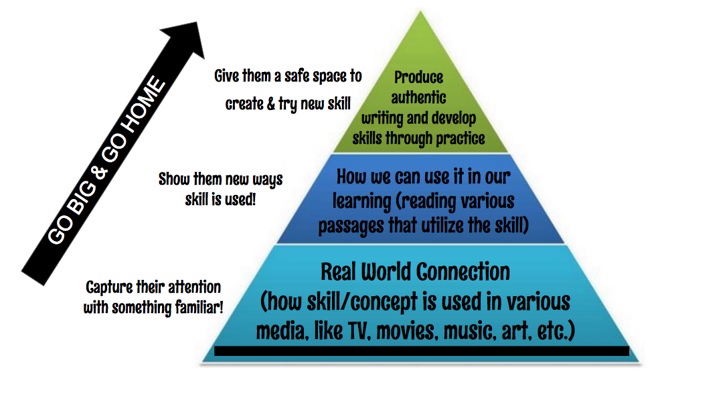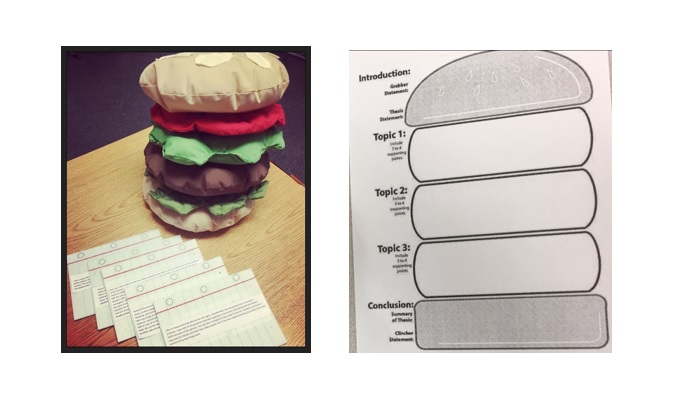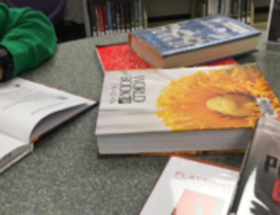It’s a proud day indeed on today’s That Thing You Do! segment. Proud because I’ve seen Katie Webb start her teaching career and in a few short years look every bit the master teacher. Katie coaches me today through a systematic protocol for supporting ELL students with meaningful and rigorous language and content learning in her guest post. Katie is an ESL teacher in a large suburban district in Texas. She’s my friend, my mentor, my hero. You can follow Katie on Twitter @MrsWebbReads
As an ESL facilitator, my students come from every corner of the world. Each learner has a unique story; some have lived in the U.S. for most of their lives, while others are experiencing American culture for the very first time when they come to our school. The potential for trepidation is great enough, even before the complexities of learning a new language.
The endeavor of connecting classroom lessons to the real world, and to one’s own experiences, is an essential aspect of the educational experience. I find this is even more important for my ESL students, as I help them to navigate the intricacies of language acquisition in the midst of their academic efforts. As I strive to connect the conceptual ideas in the curriculum with the tangible realities of my students’ lives, I keep in mind the idea of “Go Big & Go Home.”
This concept is by no means an original idea; in fact, it is a pedagogical pattern that I picked up on throughout the curriculum that I taught at a previous school district. Like many teachers, I strive to show my students how classroom lessons relate to their daily lives and how skills learned in school can help them throughout their entire lifetime. “Go Big & Go Home” is my way of connecting the classroom to the real world.

With each curricular unit, I begin by showing how a learner can use the academic concept to better understand the broadest aspects of the world, some of those universal themes that carry meaning across linguistic and cultural barriers. For example, if my class is working on a unit about characterization, I might show the students how we can gain deeper insight into world leaders or other well-known persons by using the tools and concepts of characterization to analyze them. The class works together to apply various labels and see how certain people play a larger or smaller role in key events.
To narrow the focus a bit more in the next level of “Go Big & Go Home,” the class will read a short story or novel, and once again, we will use characterization to strengthen understanding of characters’ roles in the story, with added emphasis placed on how to distinguish the prominence of different characters within the story, and the importance of each of these characters in the overall narrative. In this step of the process, students are engaging with a fixed, fictional literary work; the entire universe of the story is contained within the pages of the composition, and they can use their creative abilities to explore how and why various individuals act, using background details, word choice, etc.
To bring the concept to its most individual focus, to “Go Home,” I will have each student write a character sketch, in which they critically analyze a number of characters from the stories discussed thus far. Students will reflect on the ways we corporately applied these concepts to large-scale events, as well as specific literary works within the classroom setting, as they write their sketches. As they apply the lessons on characterization, they will have a greater understanding of the roles played by various characters, not only in the literary stories in class, but in the world around them as well.
In a recently completed unit on tone and mood, we began by watching the original theatrical trailers from Elf and Frozen, followed by a discussion of the specific things that create a tone of happiness and signify them as children’s movie. I then showed them the same clips, except they had been purposely spliced and overdubbed to resemble movie previews from the horror and thriller movie genres. We talked about how the creator changed certain details (music, lighting, etc.) of the preview and what they used to bolster the sense of fear and apprehension.
After watching each clip, the class discussed how it made them feel, how they thought the characters felt, and what sorts of words, phrases, etc. they noticed that conveyed those feelings. We then shifted to artwork, and the students had the chance to search for visual clues that portrayed a certain tone or mood in the piece of art. From these two primarily visual forms of media, we moved into several short stories from the mystery genre. Once again, students had to seek out evidence that bolstered their assertion of the story’s particular tone and mood. The unit concluded with each student crafting their own mystery story.
As we began the unit, students drew out examples of tone and mood from well-known movies (Go Big). With each lesson, students had to dig deeper to find proof of tone and mood, applying the previously learned skills to a new format. In addition, students learned the value and necessity of providing solid evidence. Initially, students pointed out evidence of tone and mood as the class discussed the difference between two movie clips; as the unit progressed, they discovered different avenues that authors/creators use to express tone and mood (via art, literature, etc.). By the end of it, they used this knowledge to craft their own stories with specific and clear examples, drawing upon the numerous examples from popular works to create their own unique atmosphere within their essays (Go Home).
“Go Big & Go Home” can also be used in expository writing. We used a hamburger as a visual for students in their writing, comparing it to a full essay and its individual parts. We initially viewed the entire essay as a burger, and then we examined each piece of the burger (bun, meat, lettuce, etc.), giving particular attention to each section (introduction, body, and conclusion). We broke it down even further, examining the constituent parts of each major essay section. As we learned about the hook and thesis in the introductory paragraph, for example, we were able to tie those ideas back to the broader picture and purpose of the essay. If students can better grasp the connections between the big picture and the smaller parts, their comprehension can last far longer than the school year. In an attempt to bring this lesson to life, my sister-in-law helped me create a large, plush, burger to help illustrate the way that the various elements of an essay combine to create a full piece of work.

To introduce the ideas behind the organization of a “burger essay,” I found some well-developed, five-paragraph essays, and cut them into individual parts. Students were charged with reading the parts and organizing the essays according to the structure of the burger. We discussed as a class what things are needed for an introduction (top bun). Student determined that a hook, detailed sentences, and a thesis or controlling idea was vital for an introduction. Moving onto the body paragraphs (meat, lettuce, tomato), we discussed transition words, topic sentences, and proof/support. Lastly, students determined the parts of a conclusion by finding thesis statements written in new ways, summary sentences, and final thoughts. Being able to label these parts and see a visual connection to a plush hamburger has hopefully enticed my students to serve up a delicious essay. At times, if a student turned in an essay with a missing component, I would return their paper and say, “I think this burger needs some more time to cook!”
Each step of the way, I aim to bring together the grandiose and the miniscule, to show my students how individual persons, events, etc. are connected to the larger picture, and how seemingly minor aspects of their writing (or any other creative outlet) plays a pivotal role in strengthening the overall product. As we progress from “Go Big” to “Go Home,” I want the student to embody the concept or skill into his or her own work, to create a natural flow of application from the big picture to the small.
In the end, my goal is to equip my students with new ways to interpret and analyze the world around them. I would be selling my students short if I simply taught these academic ideas so that they could pass their exams and proceed to the next grade. Whatever the curriculum may be, I want to use those ideas to show this new generation how to critically engage with the world around them, both as future adults and (at least, in my case) as persons entering into a new and vibrant culture.
With “Go Big & Go Home,” I want to give my students every opportunity to play an active role in their world, from the most comprehensive facets of our globalized planet, down to the day-to-day interactions with their friends and family. I aspire to show my students that their lessons go far beyond their daily classwork, that these lessons can equip them to face their worlds head-on.










